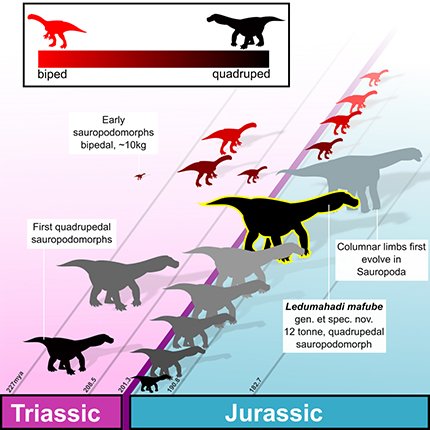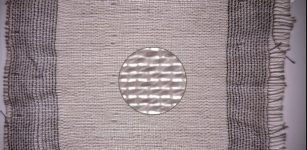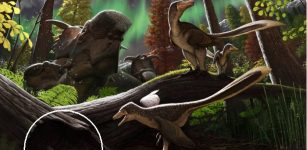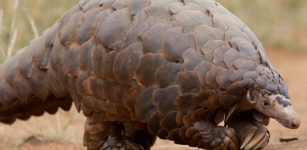Meet Ledumahadi Mafube – New Giant Dinosaur That Roamed South Africa – Discovered
Eddie Gonzales Jr. – MessageToEagle.com – Researchers have discovered a new species of a giant dinosaur that once roamed South Africa’s Free State Province. Named Ledumahadi mafube this plant-eating dinosaur was by no means a small creature.
Ledumahadi mafube was the largest land animal alive on Earth when it lived, nearly 200 million years ago. It was roughly double the size of a large African elephant.
Scientists say Ledumahadi mafube, weighed 12 tonnes and stood about four meters high at the hips.
Behind the study is a team of international scientists, led by University of the Witwatersrand (Wits) palaeontologist Professor Jonah Choiniere and the results of their research have been published in the journal Current Biology.
The dinosaur’s name is Sesotho for “a giant thunderclap at dawn” (Sesotho is one of South Africa’s 11 official languages and an indigenous language in the area where the dinosaur was found).
The Highland Giant: Artist Viktor Radermacher’s reconstuction of what Ledumahadi mafube may have looked like. Another South African dinosaur, Heterodontosaurus tucki, watches in the foreground. Credit: Viktor Radermacher
“The name reflects the great size of the animal as well as the fact that its lineage appeared at the origins of sauropod dinosaurs,” said Choiniere in a press statement. “It honours both the recent and ancient heritage of southern Africa.”
Ledumahadi mafube is one of the closest relatives of sauropod dinosaurs. Sauropods, weighing up to 60 tonnes, include well-known species like Brontosaurus. All sauropods ate plants and stood on four legs, with a posture like modern elephants. Ledumahadi evolved its giant size independently from sauropods, and although it stood on four legs, its forelimbs would have been more crouched. This caused the scientific team to consider Ledumahadi an evolutionary “experiment” with giant body size.
See also:
Largest Dinosaur Foot Ever – Discovered In Black Hills Region Of The United States
Did Dinosaur Evolve Frills And Horns For Sexual Attraction?
Rare Giant Dinosaur Footprints Discovered On The Isle Of Skye, Scotland
Ledumahadi’s fossil tells a fascinating story not only of its individual life history, but also the geographic history of where it lived, and of the evolutionary history of sauropod dinosaurs.
“The first thing that struck me about this animal is the incredible robustness of the limb bones,” says lead author, Dr. Blair McPhee. “It was of similar size to the gigantic sauropod dinosaurs, but whereas the arms and legs of those animals are typically quite slender, Ledumahadi’s are incredibly thick. To me this indicated that the path towards gigantism in sauropodomorphs was far from straightforward, and that the way that these animals solved the usual problems of life, such as eating and moving, was much more dynamic within the group than previously thought.”
Ledumahadi mafube is the first of the giant sauropodomorphs of the Jurassic. Credit: Wits University
The research team developed a new method, using measurements from the “arms” and “legs” to show that Ledumahadi walked on all fours, like the later sauropod dinosaurs, but unlike many other members of its own group alive at its time such as Massospondylus. The team also showed that many earlier relatives of sauropods stood on all fours, that this body posture evolved more than once, and that it appeared earlier than scientists previously thought.
Ledumahadi is also closely related to other gigantic dinosaurs from Argentina that lived at a similar time, which reinforces that the supercontinent of Pangaea was still assembled in the Early Jurassic.
“It shows how easily dinosaurs could have walked from Johannesburg to Buenos Aires at that time,” says Choiniere.
Written by Eddie Gonzales Jr. – MessageToEagle.com Staff Writer












